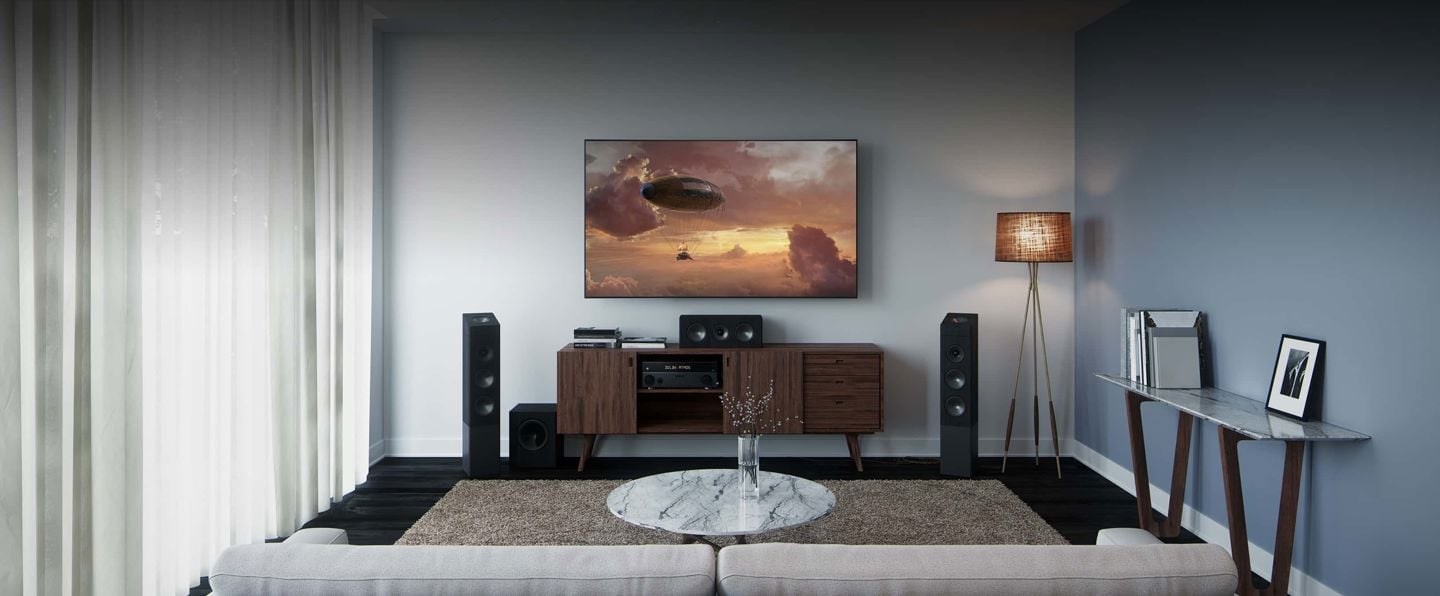How does a Dolby Atmos setup differ from a surround sound setup?
Typical surround sound setups have either 5.1 or 7.1 channels. A 5.1 system has left, right, and center speakers in front, with left and right surround speakers. A 7.1 system adds left and right rear surround speakers. A 9.1-channel system adds front height speakers to take advantage of Dolby Pro Logic® IIz, which derives height information from the signal.
Dolby Atmos layouts add height speakers to the traditional 5.1 and 7.1 surround sound setups. Adding two height channels creates a 5.1.2 or a 7.1.2 system. Dolby Atmos systems with four height channels are designated 5.1.4 or 7.1.4.
To add overhead sound, you can use two or four speakers mounted in or on the ceiling, or use Dolby Atmos enabled speakers that fire sound upward toward the ceiling, from where it's reflected back to the listening area.
There are also simpler systems, such as sound bars, that deliver the Dolby Atmos experience.
